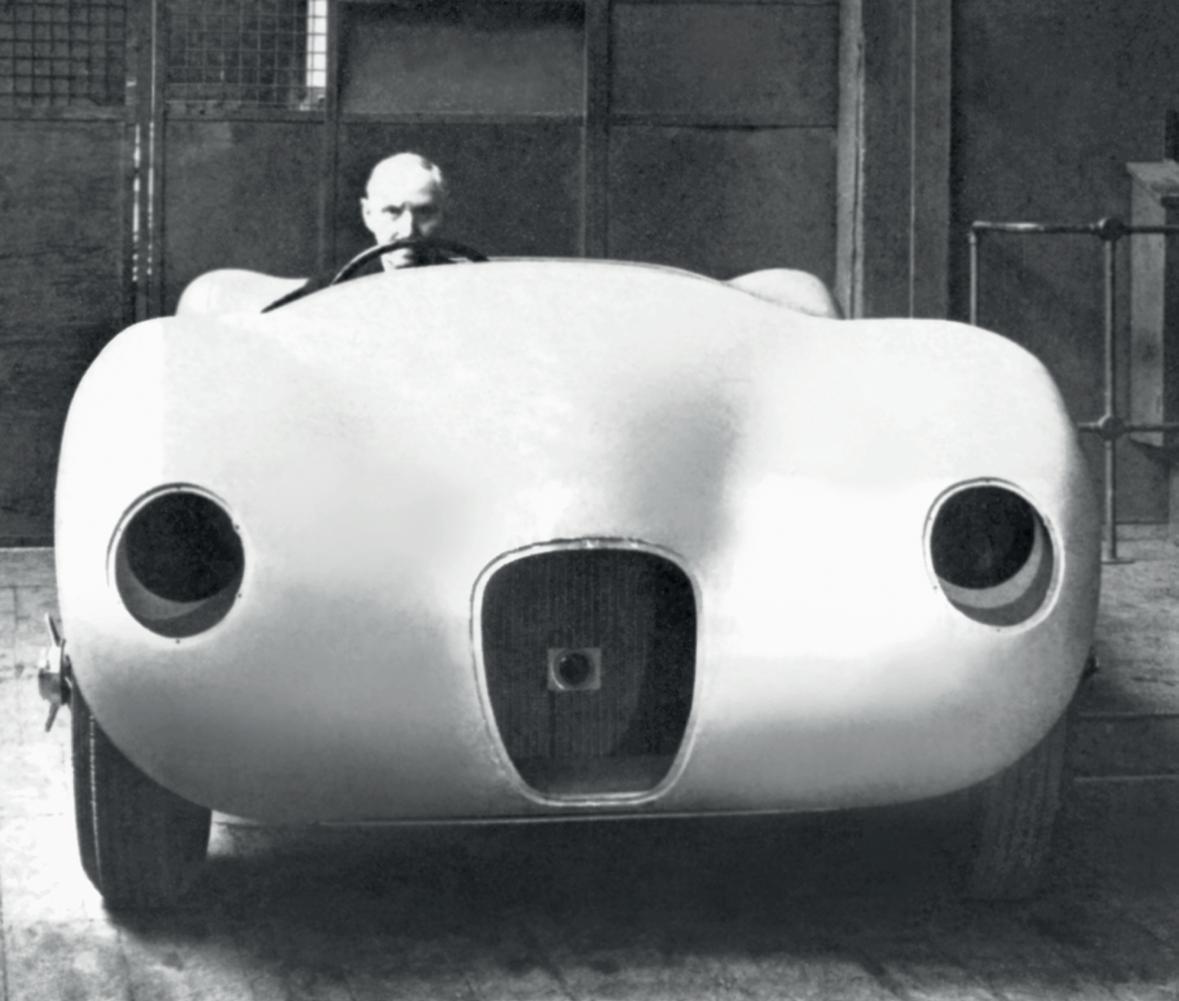
10 minute read
WELCOME BACK
BODY OF THE FIRST C-TYPE
A Piston Was Holed And It Was Pushed Away
Advertisement
IN OUR PREVIOUS EDITION WE BROKE THE extraordinary news that the very first C-Type ever built still exists and has an unbroken history. It was one of three which made up Jaguar's first entry at Le Mans (1951).
In publishing this magazine we had no intention of flying in the face of accepted motoring history - official even - but it is satisfying to find, against all odds, a particularly historic Jaguar still exists. We did the same several years ago when we found the 1948 London Motor Show XK120 was not RHD #660001, but LHD 670001. Jaguar sent it to the US late in 1949 and it survives too!
The first C-Types were XKC001, XKC002 and XKC003 but very nearly 'XK150-001, 002 and 003' until they were officially proclaimed as XK120Cs. The C-Type wording is totally non-factory. The latter, 003, took victory in that French 24 Hour classic, the first of seven wins for Jaguar to date (we live in hope …).
To add to the unlikelihood of XKC001 surviving, it was the hardest worked of the three having done most of the pre-Le Mans sorting at various tracks. It was later used for sixteen months by Norman Dewis to develop Dunlop racing disc brakes and aiding further C-Type development. Whilst claims have been made 001 was one of the 1952 Le Mans entries, Norman confirmed that the three cars which ran did not include his weekly work machine 001. It ran at Le Mans once, and five other events through to ’52, winning twice at Goodwood with Stirling Moss.
At the close of Norman Dewis’ testing programme a piston was holed in May 1953, and the old racer was pushed into a corner of the Experimental Department awaiting 'dismantling' in Jaguar's parlance. It was still there on June 22, the day after Duncan Hamilton crashed his XKC004 and the day after the factory was notified.
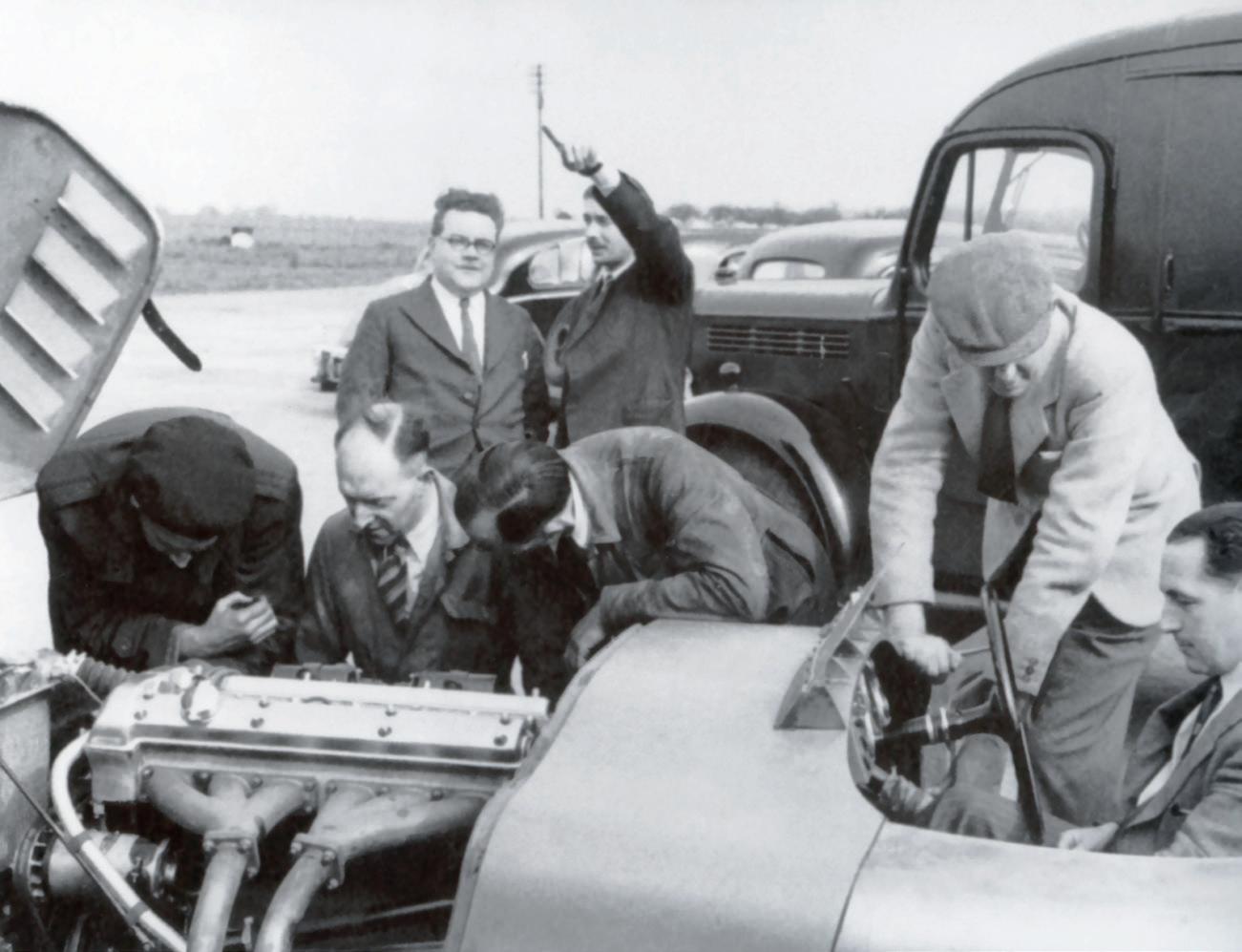
XKC001 was removed from Jaguar’s records that same Monday, and on August 31, 1953 Company paperwork declared: ‘Dismantled and parts passed to Service Department’. The Manager of Jaguar’s Service Division was Lofty England, Jaguar's unofficial Racing Manager and a very close friend of Duncan who had won a second Le Mans for Jaguar only one week before the massive 004 crash in Oporto Portugal.
Just over three months later, and having remained in Portugal for a whole month before being shipped back to England and transported to Coventry, XKC004 reappeared at Goodwood in primer with Duncan at the wheel.
Duncan, after an earlier serious accident in 004 at the Curragh circuit in Ireland on September 6, 1952 wrote to Lofty England saying he 'hit a wall at 100 mph, the chassis
LOFTY'S HEAD ENGINEER WAS IN OPORTO
01 At the C-Type Le Mans debut chassis XKC001 was car #23 driven by Leslie Johnson and Clemente Biondetti. It retired after fifty laps. 02 Moss in his winning XKC002 at Silverstone in 1952. Notice the indented bonnet panel with later vents at the top. The side has 1951 vents. 03 Prior to the 1951 race debut, and photographed in Coventry - notice #23 has no external door hinges unlike #22. 04 The last race for XKC002 came at Goodwood in 1952. In the same year XKC003 suffered identical damage at Monaco and outcome.
was completely gone and I was not insured either.' It is likely Jaguar took the car back and rebuilt it over the winter for his return to racing seven months later on April 6, 1953.
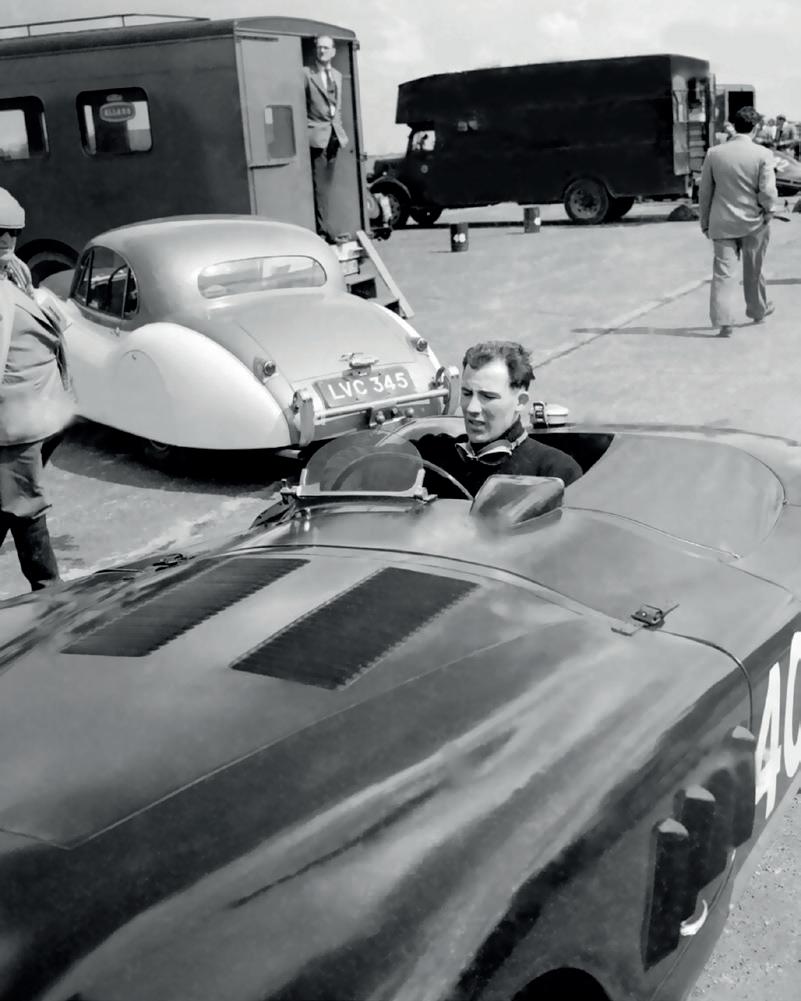
For the Oporto meeting Lofty’s head racing engineer Len Hayden had driven to Portugal with Duncan and his wife Angela after the Le Mans win to prepare XKC004. Of course, the line of communication back to Lofty about the gravity of the Oporto accident was even more direct.
Photographs taken at the time indicate that when Duncan drove MDU214 at Goodwood on September 26, 1953 in primer and wearing the incorrectly painted registration number MDU219, it was not his earlier XKC004. If Jaguar wanted to help him get back onto the track XKC001 was the only C-Type available and was probably gifted to him by Lofty and William Lyons.
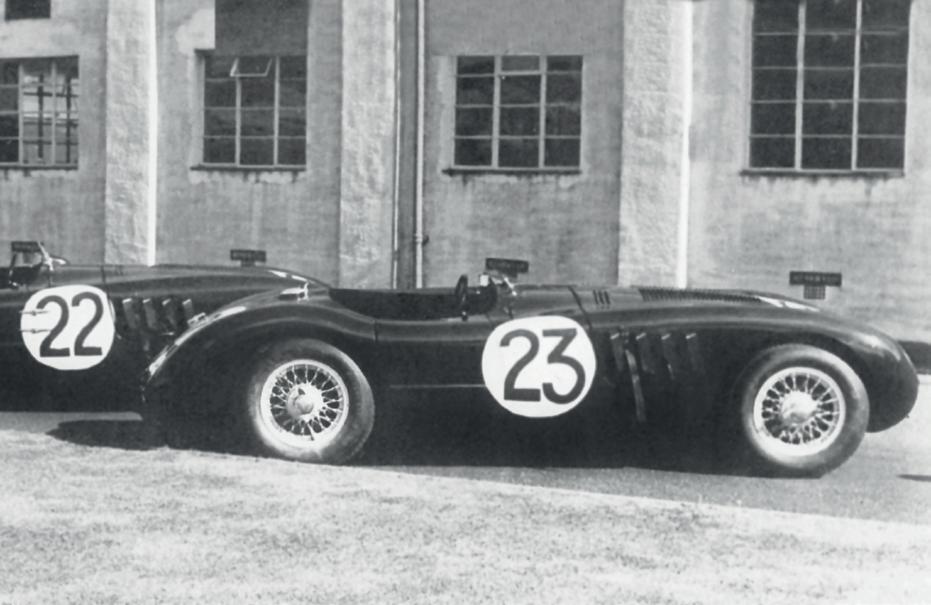


Duncan almost certainly would again not have insured 004, but having had it repaired previously, the Jaguar bosses seem to have taken a favourable view of how to best help him sort the badly damaged 004 ... especially as he had won Le Mans for them.
Jaguar had sold all of its new customer C-Types by then, XKC002 and 003 were damaged in their final races, so it is most likely that 001, with its defunct engine, was transported to HWM with a damaged bonnet to be repaired. It was the only time Duncan raced a reincarnated 004 before selling it to Captain John Howey in Kent liveried now in British Racing Green.
The close link between HWM and Jaguar is illustrated by the fact that Lofty sold them one of the 1952 Le Mans engines to put into their newly announced
WE DIDN'T REVEAL IT BELONGS TO ROY PALMER
HWM Jaguar sports car registered HWM1. Lex Davison in England with Tony Gaze and Stan Jones for the Monte Carlo Rally, purchased just a Le Mans head from Jaguar for the price of a new Holden. That's a clear illustration of how generous Jaguar was to HWM! Furthermore, on a personal level Duncan and George Abecassis, who co-owned HWM, were great friends and raced together many times. Duncan drove frequently for HWM, and their businesses were only a few miles apart - HWM being at Walton-OnThames and Duncan's at Byfleet.

As expected, following publication there have been comments made about the background to our revelation, some of them positive - others wanting more evidence. What we didn’t reveal was the car body belongs to Roy Palmer in England. He has spent the past eleven years researching the key facts which identify the three 1951 works C-Types, and what differentiates them from later production cars.
There are photographs of 001, 002 and 003 which clearly distinguishes them from production cars 004 on, and show them to have passenger door outlines, steel firewalls instead of aluminium and low-set flush rear tail lights not fitted to pods. They also had slightly different bodies and chassis. The chassis was drilled in the centre. They too had a unique body ‘shoulder’ on both sides of the cockpit behind the driver and passenger seats, and even more noticeably, XKC001 is the single C-Type with no external door hinges.
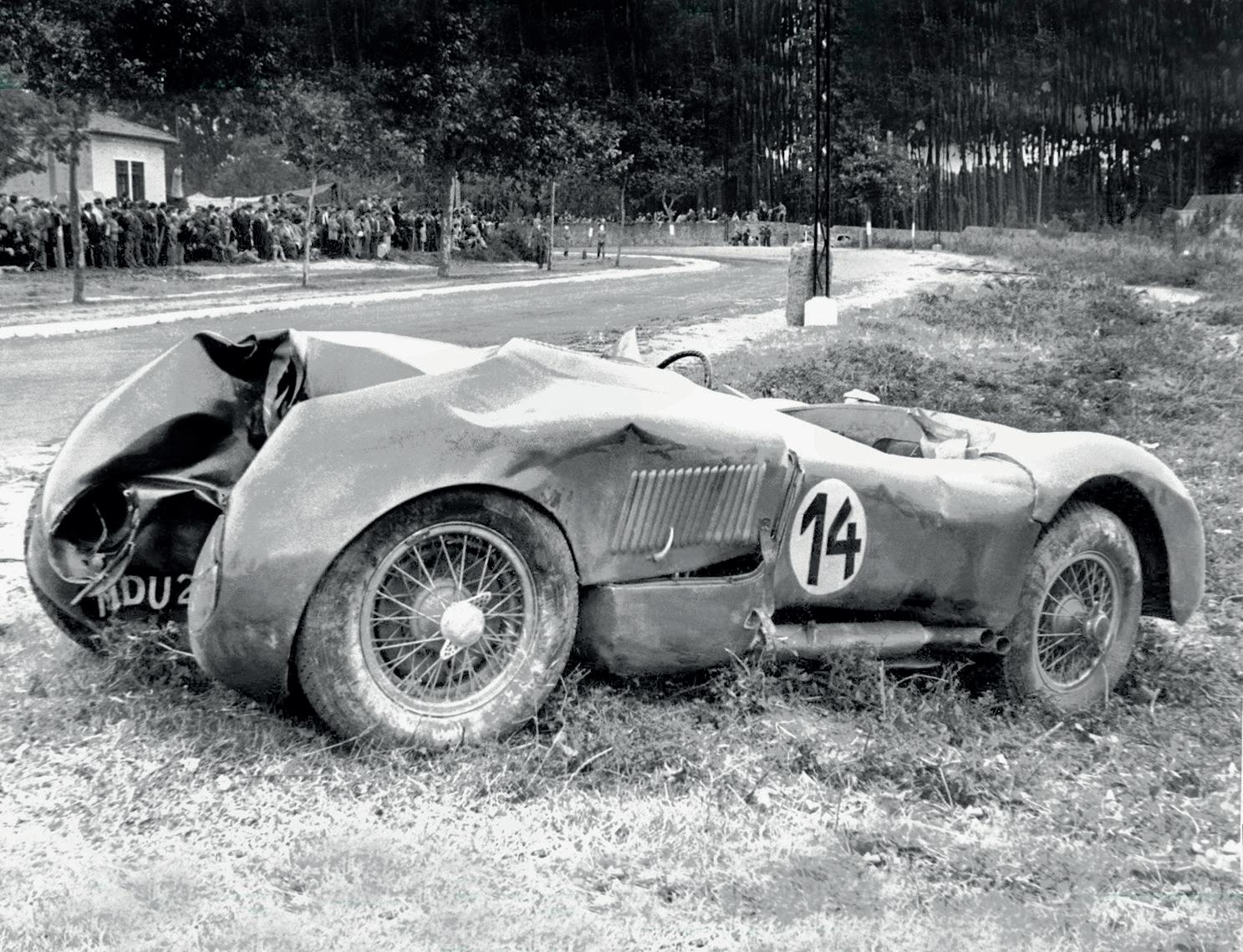
In 2012 Roy Palmer acquired what he knew to be a genuine C-Type body, having decided to create a perfect replica. Neither he, nor the then owner, had any idea which C-Type it originated from.
01 A rare Oporto racing poster - this one is promoting the 1952 event. 02 The sole race for Duncan Hamilton's XKC004/001 was the Goodwood International on September 26, 1953. It was entered as being green but arrived in grey primer. While it didn't finish in the first three it did set the fastest lap of the race. Note the hastily painted registration number!
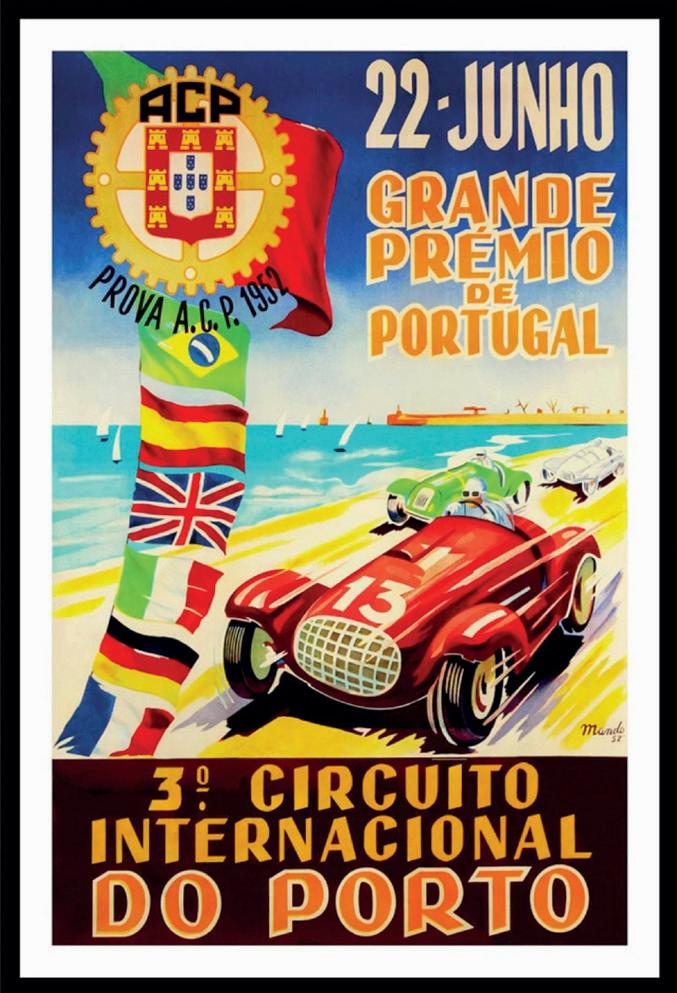
Roy: “The project unfolded in various stages like a jigsaw puzzle, but I had no detailed end picture, a lot of questions and a whole lot of missing pieces!
“Each time I came across another piece of possible new evidence such as a key photo, a comment in a meeting, or a cross-reference in a book it seemed to build up the puzzle. It was a bit of an adrenaline rush, and I kept in touch with Jerry Booen who had just completed a blue-print reconstruction of 003. He took on my project build programme. The evidence that emerged from my on-going research was key in informing Jerry as work progressed.
"I created a continuous one-off photographic history of the car which grew over the first five years and through to now. We made decisions such as to how the finished car would look, and construction details to ensure a faithful result. That included screen, seats, leather or cord, colour, Hardura trim or not, headlamp surrounds, correct suspension, engine details for an early car and colour of the chassis etc., etc.
“It’s easy to forget that when I first considered acquiring the project I had no knowledge at all of the role of 001, 002 and 003, 1951 Le Mans or anything much C-Type. It was all a voyage of discovery and led me in directions I had never envisaged. It was a lot of fun and gave me deep satisfaction. To help put it all together I made up a formal reference in 2018 for my own use, logging what seemed to have happened, when and how. It became a personal reference booklet summarising my findings which I titled 'The Story Of An Early C-Type'. It was during this period I realised 001 was the only C-Type with internal door hinges as mentioned by former owner, John Undery.
“A suggestion has been made that the factory could have lent Duncan another C-Type to race on September 26, 1953 at Goodwood. It continued that whilst the crashed 004 was rebuilt over weeks or months, it was returned to Duncan to sell onto Jack Howey some time after the meeting. In other words, they state 004 today is the original car repaired.
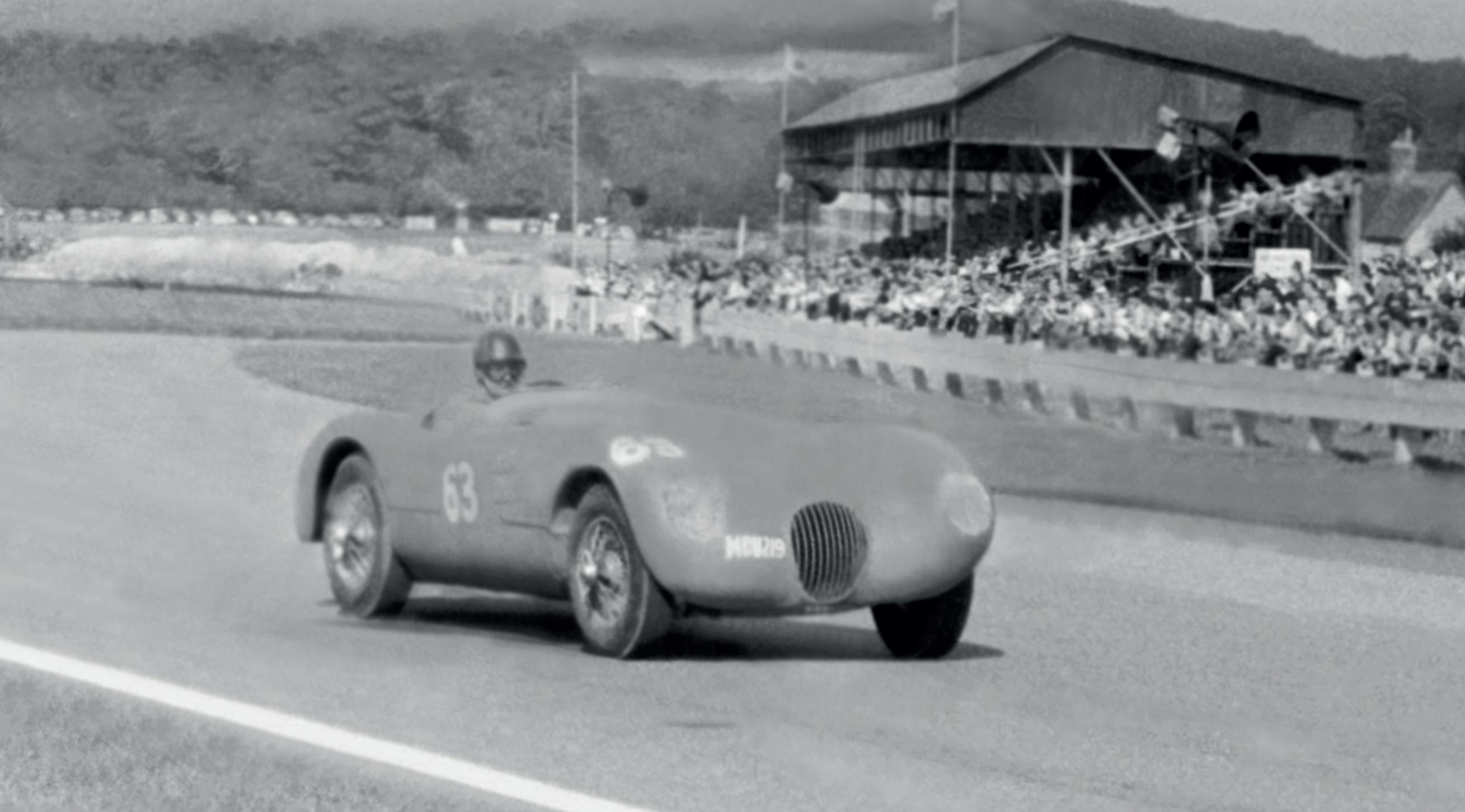
"If that is so why was it raced in primer, and why does MDU214 with Jack Howey posed in it, look exactly the same as the September primer-coated racer? You can form your own view. Additionally, at that time Jaguar only had access to XKC001, 011 and 012. 012 though was the spare at Le Mans in 1953, and 011 was in regular factory competition and development use.
“What cannot be denied is the fact that MDU214 when Jack Howey bought it, had all the XKC001 1951 through to 1953 features. Those not-repeated items didn’t change until Guy Williams and Stuart Cranfield cleaned the body up in 1972 and ’73. Then in the 1980s it was rebodied in its entirety by RS Panels.
“A similar suggestion is that in rebuilding crashed 004 the works used body parts from 001, fitting them to the very badly crashed chassis. Hence they say it has to be 004 underneath today.
"I don't deny the use of 001 body parts could have been an option, but I am not happy or confident with the claim the crashed remains of 004 only needed the bonnet replaced, the rest was not damaged and hence was raceable eight to eleven weeks later. One look at the wrecked car on the side of the Oporto track is enough to sort that argument out!
“Yes, MDU219/4 at Goodwood could have been 004 underneath, with 001 body parts and a non-standard bonnet. Why not indeed? However, the work needed, time taken and cost for Jaguar seems much less attractive than simply giving the retired 001 in its entirety to Duncan. He could change any 001 identifiers to read 004, then claim it to be his road-legal 1952 004 with its MDU214 registration plates. That would be followed by the onward sale by Duncan’s business to Howey.”
It has been pointed out that Jaguar would never present a car finished in primer to its owner, and to such a crude standard as 004 was at Goodwood in late-1953. 1951 images show XKC001, 002 and 003 did not have a rectangular ID plate riveted on, and the firewall on Roy’s body has no holes for such an item. XKC004 would have originally had a 1952 design plate on the passenger-side section of the firewall because it was necessary to record the sale to Hamilton in 1952 as the first road-registered production C-Type.
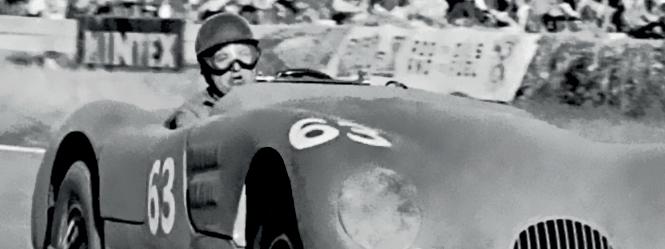



Roy: "At the start of the project a standard C-Type production chassis was ordered from David Brown in New Zealand, but when it arrived at Jerry Booen's workshop it didn't fit my original body parts. There were a number of
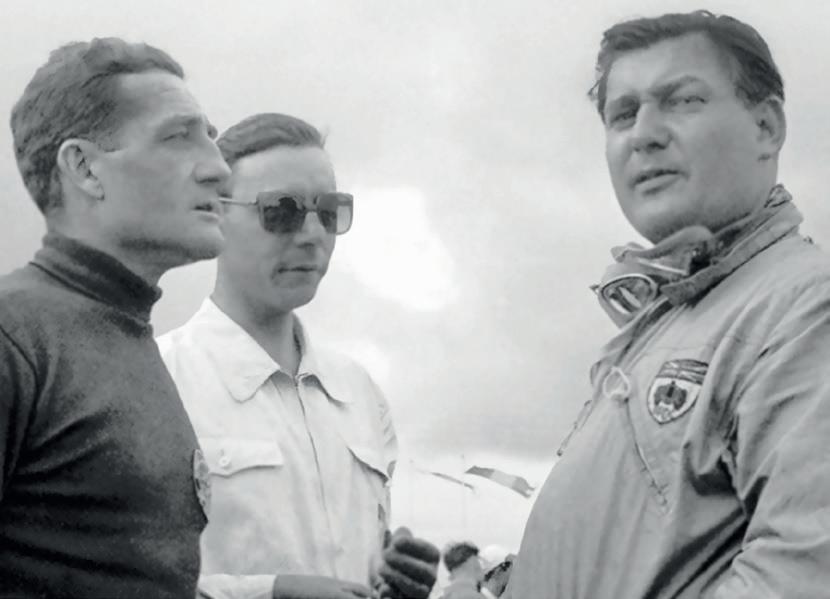
Fia Htp Papers Show It To Be Registered Ndu840
pinch-points at narrower parts of the original body; however when they were offered up to Jerry's perfect reconstruction of 003, they fitted. They fitted a 1951 competition chassis but not a production unit. Another chassis, this time to 1951 dimensions, was immediately ordered from New Zealand.
"Work was completed and FIA HTP papers issued on January 18, 2017 showing registration NDU840. That's a 1953 issue plate close to the ex-Australian Dr Boorman and Frank Gardner C-Type XKC037. The latter was registered NDU970 in Coventry on August 31, 1953. The Jaguar Daimler Heritage Trust's XKC045 received NDU289 in Coventry on April 9, 1953.

"Returning to what happened to the three works competition cars after 003 won Le Mans, they continued racing throughout 1951 and 1952 until 002 and 003 were scrapped in late-1952. After Silverstone on May 10, 1952 001 was fully assigned to test driver Norman Dewis as his main experimental development car. From then until May 1953 it was subjected to a continuous series of high speed brake testing on disused runways at Perton, Gaydon and the main Heathrow runway. Sometimes the exercise was sixty plus times without a break."
With the assistance of Dewis's daily work records, Philip Porter and Chas Parker wrote in their acclaimed book 'Jaguar C-Type - the autobiography of XKC051': "Dewis's disc brake tests during March (1952) were with XKC001. It had covered 1705 miles when he noted the following in his log for March 7: 'disc brakes refitted and bled, discs hard chrome plated, special non-shear front engine mountings fitted, bonnet louvres modified, handbrake assembly fitted to transmission and gearbox cover modified to suit.'
Norman recorded too in his autobiography that 001 was finally retired on Sunday May 15, 1953. Discs were fitted to the 1953 Le Mans entries, so 001 had no further purpose, but presented an opportunity to solve Duncan's problem.
Examination of photographs of the machine purporting to be newly-rebuilt 004 at Goodwood on September 26, 1953 show a completely different unit - no external door hinges, a dummy passenger 'hatch', non-standard bonnet with double rows of short-cut louvres and a non-standard grille with eleven bars.
It also had a unique wind-deflector fitted across the scuttle. Dewis recorded XKC001 was prepared for further testing in late-February 1953 with a 1952 Le Mans radiator and bonnet fitted. On 6 March he wrote it had a 'one-piece metal deflector screen fitted, the angle set at 45 degrees'.
It was a design by factory aerodynamicist Malcolm Sayer aimed to do away with a formal windscreen, but Norman declared the wind hit his face above the bridge of his nose so his vision was obscured.











